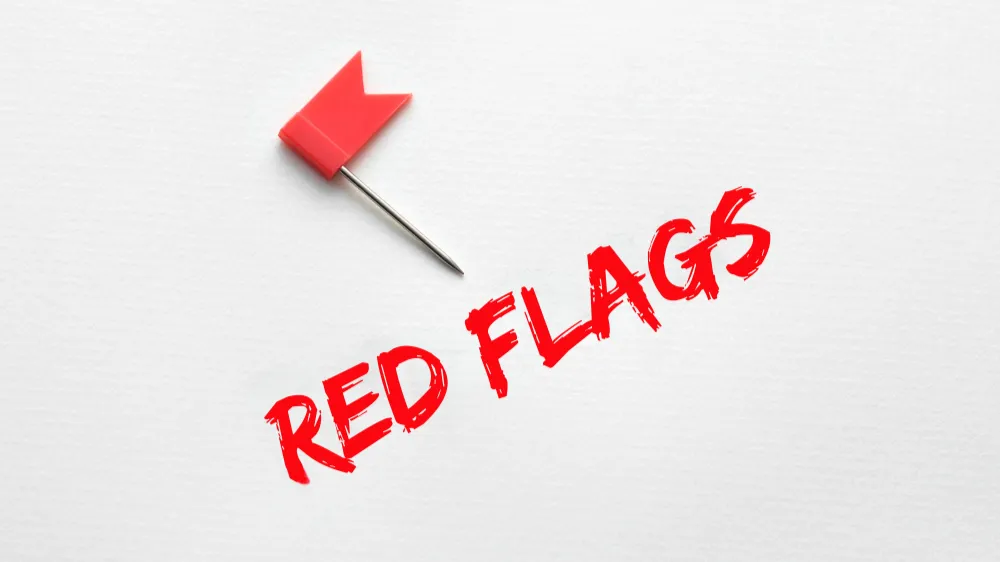? Introduction: Recognizing Red Flags in Clients
In the dynamic world of professional services, whether you’re a freelancer, consultant, or business owner, client relationships are pivotal to success. While many clients can be a joy to work with, others may present challenges that outweigh the benefits of the partnership. Identifying red flags in clients early can save you time, resources, and stress.
Understanding these warning signs is crucial. They help you make informed decisions about which clients to take on and which to decline. This article delves into the top 10 red flags in clients, providing insights to help you safeguard your professional integrity and business health.

? Top 10 Red Flags in Clients
1️⃣ ? Unwillingness to Sign a Contract
A clear contract outlines the scope, deliverables, timelines, and payment terms. If a client resists signing a contract, it’s a significant red flag in clients. Working without a contract can lead to misunderstandings and disputes.
Clients who avoid formal agreements may pose significant risks. Without a contract, you have limited legal recourse if the client defaults on payments or disputes deliverables. It also indicates a lack of commitment or trustworthiness on the client’s part. How to spot it: delaying contract discussions, requesting to start work immediately without formal agreements, or questioning standard contractual clauses unreasonably.
2️⃣ ? Reluctance to Pay a Deposit
Requesting a deposit is standard practice to secure commitment. Clients hesitant to pay upfront may lack seriousness or financial stability. This is a common red flag in clients that shouldn’t be ignored.
Clients with a history of late payments or unclear payment terms may try to delay or avoid paying altogether. They might offer excuses like, “Our accounting department is slow” or “There was a glitch in the system.” Some clients may be financially unstable or disorganized, while others may take advantage of your work without paying fairly.
3️⃣ ? Unrealistic Deadlines
Clients demanding immediate turnarounds without considering your schedule or the project’s complexity exhibit a lack of respect for your time. Such behavior is a notable red flag in clients.
Unrealistic expectations are easy to spot, mainly because they often border on the absurd. You’ll find yourself tapping a colleague on the shoulder and saying, “Guess what Client X just asked for?” These are the red flags you may notice, but often look past.
4️⃣ ? Scope Creep Without Compensation
When clients continuously add tasks beyond the agreed scope without discussing additional compensation, it’s a clear red flag in clients. This can lead to overwork and underpayment.
Scope creep occurs when a project’s requirements expand beyond its original objectives. While some changes are natural, constant additions without adjustments to timelines or budgets are problematic. Uncontrolled scope creep can strain resources, extend timelines, and reduce profitability. It can also lead to team burnout as they scramble to meet ever-changing demands.
5️⃣ ?️ Poor Communication
Effective communication is vital for project success. Clients who are unresponsive, vague, or inconsistent in their communication pose a significant red flag in clients.
One of the biggest red flags for a bad client is a lack of communication. If a potential client is slow to respond to emails, phone calls, or other forms of communication, it can be a sign that they’re not interested in working with you or that they don’t have the resources to effectively communicate.
6️⃣ ? Delayed Payments
Consistent delays in payment or excuses for not paying on time are serious red flags in clients. Financial reliability is crucial for a healthy working relationship.
Clients who consistently delay payments can disrupt your financial stability and indicate potential insolvency on their side. Late payments can hinder your ability to pay employees, invest in resources, or cover operational costs. It also requires additional time and effort to chase down payments.
7️⃣ ? Micromanagement
Clients who excessively control every aspect of your work, undermining your expertise, demonstrate a lack of trust. This behavior is a concerning red flag in clients.
Micromanagement can slow down the project, as approval is needed for every small decision. It can also frustrate your team, who may feel their expertise is undervalued. How to spot it: Insisting on overseeing every task, frequent check-ins that disrupt workflow, or overruling expert opinions without valid reasons.
8️⃣ ? Disrespect for Boundaries
Clients contacting you outside of agreed working hours or expecting immediate responses at all times show disregard for your time, a clear red flag in clients.
Clear boundaries maintain a healthy working relationship. Clients must respect the businesses they work with. Disregarding your time, personal space, or professional expertise signals disrespect. Along with impacting business owners on a personal level, client disrespect can also cause conflict.
9️⃣ ?️♂️ Lack of Transparency
Clients unwilling to share necessary information or goals hinder your ability to deliver quality work. This opacity is a significant red flag in clients.
If a client is unable to provide clear, detailed requirements for their project, it can be a sign that they’re not well-prepared or organized. This can lead to confusion and misunderstandings later on in the project, which can be difficult and time-consuming to resolve.
? ? Frequent Changes in Direction
Clients who constantly change their minds or project direction without clear reasoning can disrupt workflow and project outcomes. Such unpredictability is a notable red flag in clients.
Clients who constantly change their minds about project details can be problematic. Frequent scope changes can lead to increased costs, delays, and frustration for both you and the client.

? Conclusion: Trusting Your Instincts on Red Flags in Clients
In the ever-evolving landscape of professional services, being able to identify red flags in clients is more than a skill—it’s a necessity. These warning signs often surface early in the relationship and, if ignored, can lead to wasted time, lost income, and damaged professional credibility. Whether it’s poor communication, reluctance to sign a contract, or frequent scope changes, each of these red flags in clients signals a potential threat to your workflow and peace of mind.
Saying no to a client may feel uncomfortable at first, but recognizing red flags in clients allows you to preserve your energy for projects and partners who align with your values and professionalism. By staying alert to these red flags in clients, you build healthier, more balanced client relationships and avoid unnecessary stress.
Every freelancer, consultant, and business owner will eventually encounter red flags in clients. The key is not just to notice them but to act upon them. Doing so helps protect your reputation, maintain financial stability, and ensure long-term success.
Remember, learning to say no is a powerful tool. When you spot red flags in clients, it’s not just about walking away—it’s about making room for the right opportunities. Train yourself to see these red flags in clients as protective markers, helping you create a more positive, productive, and profitable professional journey.

? External Resources
- 10 Customer Red Flags: When to Say No and Protect Your Business
- 17 Red Flags for Bad Clients | Design Domination – Creative Boost
- The biggest freelance client red flags – Stefan Palios
Also Read: Proven Earning Tips for Freelancers: Boost Your Income in 2025

